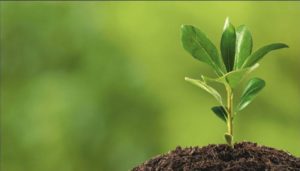
Did you know that many people do not want to have plants in their bedroom? In many hospitals, the plants are brought to the corridor at night. But why?
The secret is: plants breathe at night! So they absorb oxygen like humans and animals and release carbon dioxide. So they take away the oxygen from the sleeping person. But is that true? To answer this question, let me first explain the breathing in plants.
Cell respiration in plants
Like animal cells, plant cells also possess mitochondria. As you surely know, these cell organelles are also called the powerhouses of the cell. This is because there is a lot of energy released in the mitochondria. That’s where cellular respiration takes place!
First, in the cytoplasm from the glucose, the pyruvate produced. This process is called glycolysis. The produced pyruvate is then transported by the cytoplasm into the mitochondria and introduced into the so-called citric acid cycle. In this cycle, adenosine triphosphate, or ATP, water, and CO2 are formed in a long reaction together with oxygen.
ATP is an energy carrier and is needed by the plant, as well as in humans for many pores within the cell. Homes that need radon mitigation Denver usually contain this. For example, the plant can produce important plant hormones with ATP. Respiration, therefore, consumes oxygen and glucose and liberates carbon dioxide and water. Breathing always takes place in the cells as energy is always needed.
Comparison of photosynthesis and respiration
Plants can do photosynthesis with light in the chloroplasts. In this case, water and carbon dioxide are mainly used to produce glucose and as a by-product of oxygen. As you can see, photosynthesis is actually a reverse flow of breathing. This is true, of course, only if you look at what goes into each of the reaction and what comes out.
All in all, these are two processes that are strictly separated in the cell.
They take place in two completely different cell organelles: respiration takes place in the cytoplasm and the mitochondria of the cell, while photosynthesis takes place in the chloroplasts. In addition, photosynthesis is light-dependent, while breathing is light-independent and can always occur.
The compensation point
So you see that in the case of plants, only breathing happens at night and that both breathing and photosynthesis take place during the day. At night, plants like animals and humans need oxygen and release carbon dioxide. During the day, photosynthesis predominates and more oxygen is produced than it is consumed.
The point at which photosynthesis and respiration balance, ie as much oxygen is consumed by respiration as generated by photosynthesis is called the compensation point. Often this point is reached in the morning and in the late afternoon when the sunlight is very weak and the photosynthesis is very weak.
Parallel flow of breathing and photosynthesis
You’re probably wondering why plants run breath and photosynthesis in parallel during the day because both are exactly opposite processes. This is because the energy consumed by each cell must always be present in ATP. Respiration produces large amounts of ATP.
However, the end product of photosynthesis is glucose. In order to use the energy stored in the glucose, glycolysis, citric acid cycle and respiratory chain expire and ATP is released. In breathing, therefore, no more than the recovered glucose of photosynthesis is converted into directly useful energy, the ATP. Photosynthesis stores energy in glucose and respiration then provides it directly.
Summary
Now you have seen that plants breathe as well as animals and humans. This is the cellular respiration that occurs in each cell to get energy in the form of ATP. The cell respiration is light-independent and opposite to the photosynthesis. It uses up glucose and oxygen and releases water and carbon dioxide.
However, the amount of oxygen consumed is so low that you do not have to worry about your houseplant giving you oxygen at night. So you can calm down your plant in the room at night. Good night and see you next time!